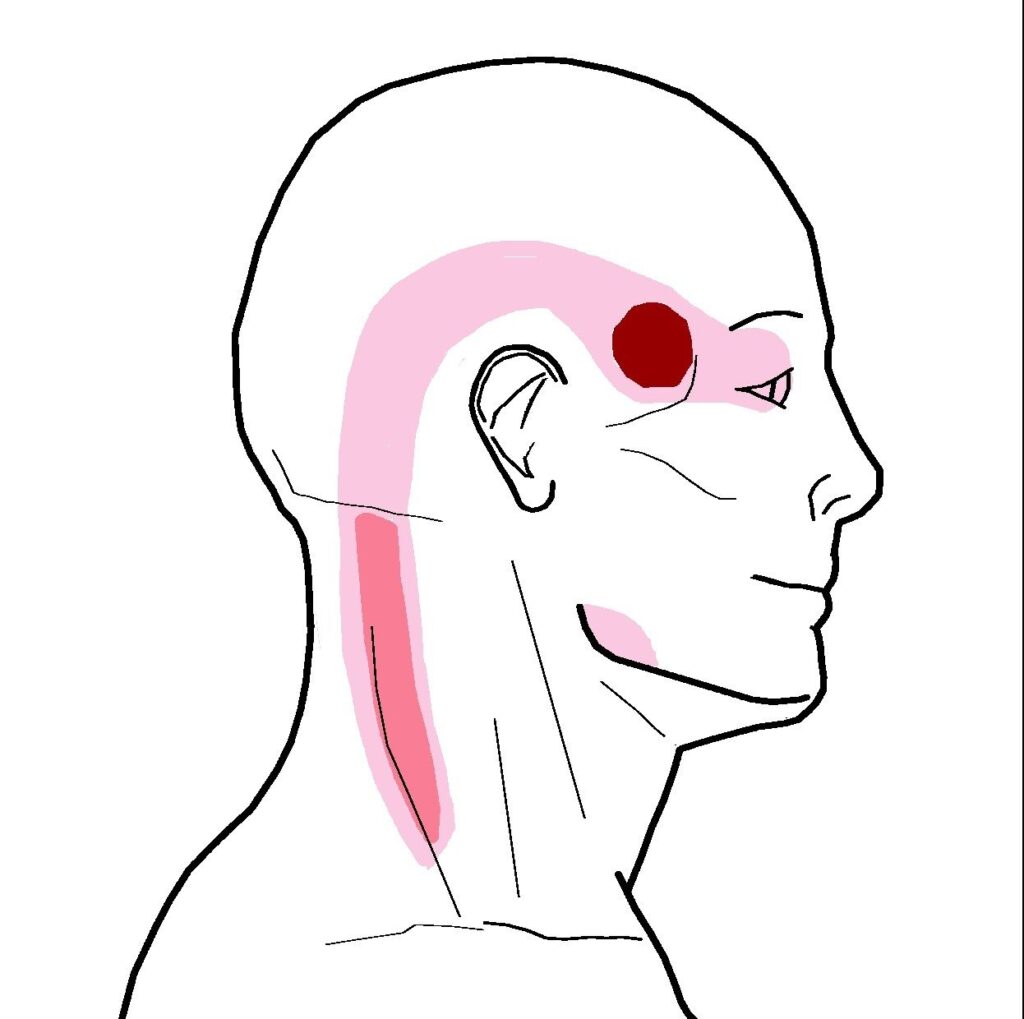Have you ever experienced a headache so severe that you felt life wasn’t worth living? If so, you are not alone. Roughly 15% of the US population suffers from debilitating migraine headaches, which are actually one of the most common medical conditions in the Western world.
Even more so, women are frequently more affected by this condition than men. Take it from Sue Adams, a chronic migraine sufferer of 29 years. Like so many women and men in the United States, Sue felt like she was doomed to suffer from these overwhelming headaches for the rest of her life. She saw neurologists, allergists, and a slew of specialists that couldn’t provide her with the help that she needed. She experimented with new drugs and medications, and she was soon plagued by serious side effects in addition to her migraine headaches. These side effects ranged from nausea to hives to itching to a severely low blood pressure that landed her in the ER.

There are probably many of you out there that can identify with Sue’s story, a sufferer of migraines since the age of 21. She was brushed off by doctors who told her that it was “only a migraine”, until she finally found a doctor who introduced her to the innovative technique of migraine surgery. Within the surgery, the muscles surrounding the nerves are cut out in a technique similar to an eyebrow lift used in plastic surgery. This is a safe procedure that many women have been using for years to improve their appearance, yet it offered Sue much needed relief to reduce her migraines significantly. Sue now reports that it has been over four months since she has had a crippling migraine, regardless of stress or changes in the weather.
So what can migraine surgery do for you?
Migraine surgery is a facial surgery that removes a small portion of the muscles or nerve tissue that trigger migraines, which will prevent or reduce symptoms associated with migraine headaches. Plastic and Reconstructive Surgery recently published a study by Bahman Guyuron, M.D., professor and chair of the University Hospital of Cleveland’s department of plastic surgery. This study examined a group of people suffering from migraines on the front, side, or back of the head. The study participants were injected with Botox into their migraine trigger points to temporarily paralyze the muscle that triggered their migraines. The participants were then divided into two separate groups at random. After the effects of Botox had worn off, one group used migraine surgery to remove the muscle tissue and nerves that triggered their migraines, and that area was then filled with fat or muscle. The second study group underwent a mock surgical procedure where an incision was made but no nerves or tissue was removed.
One year following the study, 57% of the participants that had the migraine surgery reported that their migraine headaches were gone altogether, which was compared to 4% in the mock surgical group. Overall, 84% of those who had migraine surgery also experienced a 50% reduction in their migraine pain, which was compared to 58% in the mock surgical group. So what can we take away from this study?This surgical procedure can help migraine patients who have responded well to Botox, and it offered a 92% success rate to the study participants. Those that have received migraine surgery not only have the benefit of getting rid of debilitating migraine headaches, but they also receive the added bonus of looking younger through this eyebrow lift inspired procedure.
Migraine Surgery Options
If you or someone you know suffers from migraines, it can easily prevent you from living a normal life. A migraine could last anywhere from several hours to several days, where the sufferer is rendered completely helpless. Migraines cause further stress since they are entirely unpredictable and can interfere with school, work, family, and relationships. Migraines vary on a case-by-case basis with numerous symptoms and triggers to onset the attack. A migraine could be triggered by weather changes, food, hormones, and even stress, and many patients have a difficult time identifying any triggers whatsoever. For those who do identify their triggers, they may spend large portions of their lives attempting to manage and prevent certain triggers from causing a migraine headache.
Based on the research above, medical evidence has shown that in some patients, migraines can be caused by nerve endings in the neck and head becoming irritated.
This can trigger a series of events that will cause a full-blown migraine attack. These nerve endings are located in different zones of the head and neck: Frontal, Temporal, Occipital, and Nasal. The irritation to these nerves will normally be caused by muscles in close proximity, which will repeatedly squeeze the nerves through everyday contractions. This will cause irritation and inflammation to result in a migraine attack, leaving the victim seeking long-term pain relief provided by migraine surgery. Migraine surgery will identify these trigger points and prevent the inflammation of the nerves caused by specific muscle groups. This has the potential to eliminate migraine causes and attacks altogether or at least reduce their frequency. The process of migraine surgery will begin by identifying these trigger points using Botox injections, and if the patient responds well, the trigger points will then be accessed through incisions hidden in the eyelids and behind the hairline. The muscles causing irritation will then be partially or completely removed to relieve this pressure and calm the irritated nerves to prevent another migraine attack.
Migraine surgery is not a 100% cure, yet it provides a solution to 35% of patients.For an even greater majority, more than 90% of patients will experience an improvement in their migraine attacks with less intensity, frequency, and duration. The bottom line is that this surgery will reduce the chances of experiencing another migraine by taking the pressure off of the nerves triggering the headache in the first place.
Migraine Zones
- Frontal Zone:If you experience most migraine headaches behind your eyebrows, between your eyes, or on the sides of your forehead, you most likely suffer from frontal migraines. These attacks will normally start between the eyes and move to the rest of the head. In migraine surgery, the muscle causing nerve irritation will be removed to dramatically improve migraine symptoms through small incisions hidden in the upper eyelids.
- Temporal Zone:If you find most of your migraines starting in your temples or the sides of your head, you could be suffering from temporal migraines. These are often triggered by stress or grinding the teeth. In migraine surgery, a small nerve normally pinched by your chewing muscles will be removed to reduce the overall frequency and likelihood of a migraine attack.
- Occipital Zone:If your migraines primarily start in the back of your head and upper neck, you could suffer from occipital migraines, which are normally related to stress or an injury to the back of the head. Migraine surgery will release the nerve that is pinched by a compressing muscle in that area to reduce the overall frequency of migraine headaches.
- Nasal Zone:These migraine headaches normally start around the nose and behind the eyes, and they are caused by nasal nerves pinched due to a deviated septum. These headaches are normally dependent upon the weather or nasal congestion, and the symptoms and triggers can be relieved through migraine surgery.

In all of the above cases, a plastic surgeon will inject the area with Botox to determine if you are a candidate for surgery in a specific zone. It is important for you to understand that many patients will suffer from migraines in one or more zones, and your plastic surgeon will determine exactly what zone or zones require migraine surgery. In order to be eligible for migraine surgery, your migraine diagnosis must be confirmed by a neurologist, and you must have tried other medical treatment as directed by a neurologist. You must also experience two migraine attacks per week or one migraine attack that lasts two days.
If you are a candidate for surgery, you will be given Botox injections into the corresponding migraine zone, and you will track your headaches for six weeks afterward. Your plastic surgeon will then be able to decide if you qualify for migraine surgery based on your post-Botox headaches to determine whether or not Botox provided an improvement. Migraine surgery is an innovative and cutting-edge technique that has coupled the benefits of plastic surgery with the latest migraine research to provide relief for this debilitating condition. If you are ready to get your life back, this could be the right option for you. For the many patients out there that have tried doctor after doctor and medication after medication, migraine surgery will target the source of the issue to reduce the frequency of migraines and eliminate triggers that often cause a migraine attack. It’s time to take matters into your own hands and finally get your life back!




